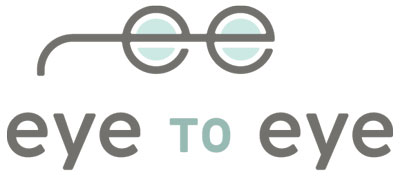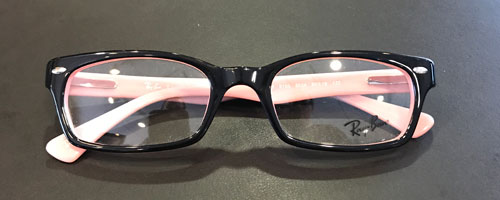What are the key things to think about when picking the perfect pair of glasses?
In the market for a pair of eyeglasses? Before you get overwhelmed by the endless options, take into consideration a few important elements: prescription strength, overall fit, and your face shape.
Prescription & Fit
Choosing the right frame is about more than just style. The wrong frame can impact the effectiveness of your prescription. The rest points of glasses need to seat properly or they can create slippage and discomfort.
The lenses of glasses have “sweet spots” called optical centers that need to line up exactly over the center of the pupil. If glasses are slipping, not only is this a nuisance, but it can affect vision by decentering the lenses over the eyes. This becomes even more important with stronger prescriptions.
These are the key fit areas of any eyeglass frame front, including the pupil location “sweet spot”. Focusing on these key areas will give you a tailored look that will work perfectly with your prescription.
Remember this when thinking about ordering glasses online. If you do not get the optical center of the lens lined up properly with your pupils, this can create distortion in your vision. Here at Eye to Eye, we measure the distance between your pupils monocularly. Eyes are not always the same distance from the nose on each side. We also look at the distance your pupil is from the side of the frame. This all helps you see the best out of the prescription your optometrist gives you.
Overall Frame Size
The best fit will “frame” your face. Pay attention to how the overall frame width works with the width of your face. The end piece should match with the widest part of your face at your temples (just in front of your ears). This fit feature is more important than the size of the lens.
Eye Position
Eye position is very important not only for how your frame looks on you, but how your Rx works in that frame. Horizontally, each eye should be centered in the lens up to 5mm inside of lens center–never outside of center. Vertically, if you imagine the lens in four equal sections, your eyes should be in the 25% segment just above center-never below center and never in the top 25%.
Bridge Fit
Comfort is key and trying on the frame is essential. Whether acetate pads that are integrated into the frame, or pads attached by metal pad arms, the nose pads should rest comfortably on the sides of your nose. The frame shouldn’t rest on your cheeks nor should the top of the frame bridge only rest on the top of your nose. This balanced fit ensures the frame fits comfortably and helps it to stay in place.
Frame Shape
While the popular generalities around how round frames are better for square faces and vice versa, this may be an oversimplification. Don’t be afraid to experiment a little. Sometimes the size of a frame is much more important than the shape. For example, if you have a round face a small round frame may look great, but a large round frame doesn’t work.
Your Prescription
There are two things to consider–your Rx power and Rx type. For low power single vision wearers, you don’t need to be concerned. For higher Rx powers (over a +/- 3.00) and/or progressive or bifocal wearers, lens size matters. High power Rx’s will want to keep the lens size as small as possible and eyes as centered as possible to help reduce lens thickness and weight. Progressive/bifocal wearers will want to ensure your eyes are in that 25% above lens center–the deeper the frame the more room you’ll have for the distance to intermediate to reading portions.
Finding the perfect pair of glasses for your face shape is also about balancing proportions. Here are a few more tips and tricks to ensure your face shape and your glasses play nice together.
Round Face
Consider a square or rectangle-shaped frame as you want to create a contrast between the face and frame.
Oval Face
An oval face shape complements almost every style of frame, try a flat-top frame, rimless style, or perhaps an oversized frame, bold color, or a frame with texture. You can really get away with anything.
Heart-Shaped Face
Choose a frame that mimics the features of your face shape, like ones that are wider on the top than the bottom. They'll draw attention to your eyes instead of your chin, and help to fill out your face.
Square Face
Skip sharply-angled glasses and instead aim for contrast with your face shape. Round and oval-shaped lenses help balance the sharpness of a square-shaped face. Consider frames with an upward curve like a gentle cat-eye or butterfly frame to minimize the squareness of your face or frames with decoration on the top outer corner.
Diamond Shaped Face
Use frames with soft, smooth lines like round or oval glasses, but to balance your face, make sure that the frames aren’t wider than your cheekbones. Consider styles with extra detail at the top of the frame like a contrasting color or decorative cat eye.
Remember, you don’t have to wear the same pair of glasses every single day. With so many affordable options, it’s now possible to pick up two or three different styles of glasses to perfectly match your mood, personal style, or special event.
You may be wondering what’s trending now? It seems that round, retro and mixed materials including tortoise and wireframes are all the rage. However, these so-called "rules" for choosing glasses are mere suggestions, not fashion law. First and foremost, whatever you feel the best in, is best for you.










